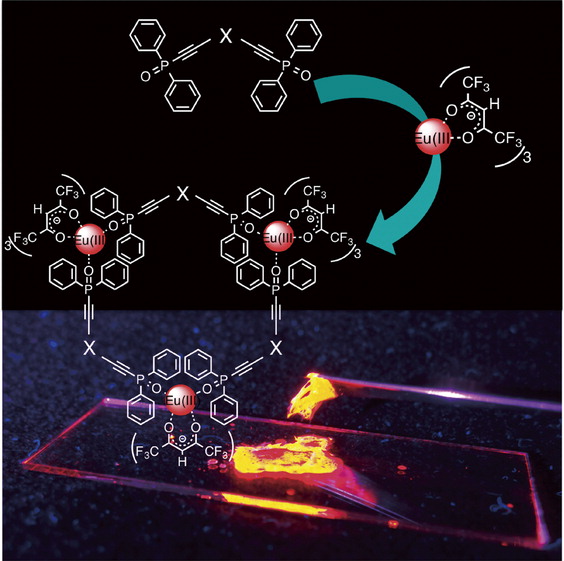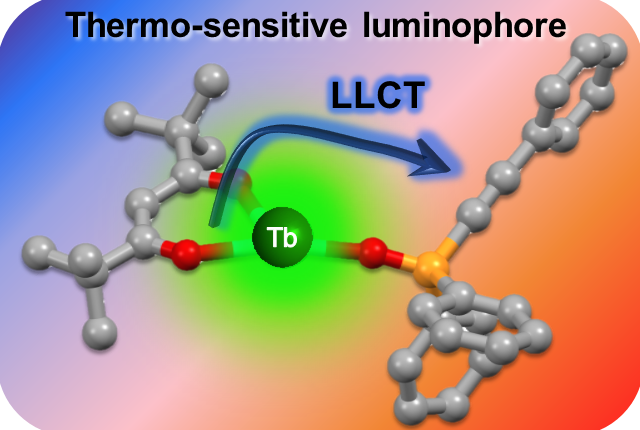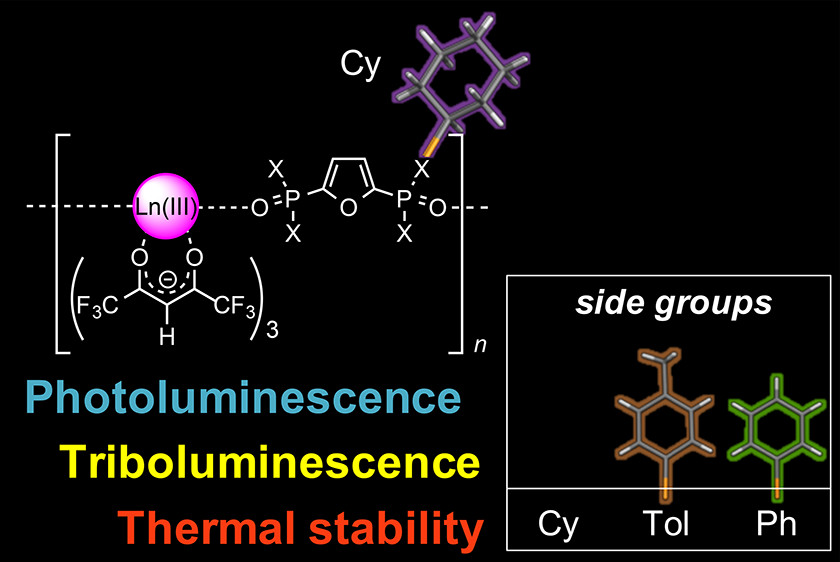Pedro Paulo Ferreira da Rosa

Doctorate course student
Born in Rio de Janeiro, Brazil. Firstly arrived in Japan in 2012 for his undergraduate studies. Currently a student in Graduate School of Chemical Sciences and Engineering at Hokkaido University. Young researcher fellow from the Japanese Society for the Promotion of Science (JSPS) - DC1.Advanced Materials Laboratory
Division of Applied Chemistry, Faculty of Engineering, Hokkaido U.
N13 W8, Kita-ku, Sapporo
Hokkaido 060-8628, Japan
P: 011-706-7115
pedroprosa[at]cse.hokudai.ac.jp
Education
Hokkaido University
Apr 2013 - Mar 2017
Bachelors Engineering - Applied Chemistry
The Department of Applied Chemistry deals with a wide variety of topics related to chemistry; from the development and characterization of new materials to the development of the technology to effectively produce and distribute them to our community.
https://www.eng.hokudai.ac.jp/course/AppliedChemistry
Hokkaido University
Apr 2017 - Mar 2019
Masters Graduate School of Chemical Sciences and Engineering
The school was opened in 2010, when Akira Suzuki (Professor Emeritus, Hokkaido University) won the Nobel Prize in Chemistry fusing chemistry in science (which plays a role in fundamental chemistry education/research) and chemistry in engineering (which focuses on practical learning).
https://www.cse.hokudai.ac.jp/
Specialization
Skills
Publications
Article
Amorphous Formability and Temperature-Sensitive Luminescence of Lanthanide Coordination Glasses Linked by Thienyl, Naphthyl, and Phenyl Bridges with Ethynyl Groups
Yuichi Hirai, Pedro Paulo Ferreira da Rosa, Takayuki Nakanishi, Yuichi Kitagawa, Koji Fushimi and Yasuchika Hasegawa
DOI: 10.1246/bcsj.20160379Abstract
The glass-transition properties and temperature-sensitive luminescence of lanthanide (Ln(III)) coordination compounds are reported. The glass formability was systematically provided by incorporation of bent-angled phosphine oxide (2,5-bis(diphenylphosphorylethynyl)thiophene: dpet, 2,7-bis(diphenylphosphorylethynyl)naphthalene: dpen, 1,3-bis(diphenylphosphorylethynyl)benzene: m-dpeb) ligands with thienyl, naphthyl, phenyl cores, and ethynyl groups. The glass-transition points were clearly identified for all Ln(III) coordination compounds (Tg = 65–87 °C). The Tb(III)/Eu(III) mixed coordination glass [Tb,Eu(hfa)3(m-dpeb)]3 (hfa: hexafluoroacetylacetonate) also showed green, yellow, orange, and red photoluminescence depending on temperature.

Article
Thermosensitive Seven‐Coordinate TbIII Complexes with LLCT Transitions
Pedro Paulo Ferreira da Rosa, Takayuki Nakanishi, Yuichi Kitagawa, Tomohiro Seki, Hajime Ito, Koji Fushimi and Yasuchika Hasegawa
DOI: 10.1002/ejic.201800281Abstract
Seven‐coordinate TbIII complexes with strong luminescence and thermosensing properties are reported. Mononuclear [Tb(tmh)3(PEB)] [tmh: 2,2,6,6‐tetramethyl‐3,5‐heptanedione, PEB: (diphenylphosphoryl)ethynyl]benzene and dinuclear [Tb2(tmh)6(m‐BPEB)] [m‐BPEB: 1,3‐bis(diphenylphosphoryl)ethynyl]benzene were characterized by single‐crystal X‐ray analysis. The quantum yields of [Tb(tmh)3(PEB)] and [Tb2(tmh)6(m‐BPEB)] were estimated to be 71 and 39 %, respectively. Thermosensing properties are evaluated by temperature‐dependent emission lifetime measurements (Arrhenius analysis), which are affected by the presence of ligand‐to‐ligand charge transfer (LLCT) bands. The LLCT bands are confirmed by DFT calculations.

Article
Structural Manipulation of Triboluminescent Lanthanide Coordination Polymers by Side-Group Alteration
Yuichi Hirai, Pedro Paulo Ferreira da Rosa, Takayuki Nakanishi, Yuichi Kitagawa, Koji Fushimi, Tomohiro Seki, Hajime Ito and Yasuchika Hasegawa
DOI: 10.1021/acs.inorgchem.8b02367Abstract
Novel Eu(III) coordination polymers with furan-based bridging ligands [Eu(hfa)3(Cy)]n and [Eu(hfa)3(Tol)]n (hfa: hexafluoroacetylacetonato, Cy: 2,5-bis(dicyclohexylphosphoryl)furan), Tol: 2,5-bis(di-p-tolylphosphoryl)furan) are reported. The rigidity of assembly steric structures was controlled by intermolecular interactions through the side groups in bridging ligands. They exhibited one of the best performances (thermal stability above 320 °C and external photoluminescence quantum yields of up to 71%) among reported lanthanide(III) compounds. The triboluminescence activity was demonstrated to be dependent on the mechanical stability of the coordination polymers, which was proportional to the number of hydrogen atoms in the side groups. The second example of a large TL/PL spectral difference in [Tb,Eu(hfa)3(Tol)]n also revealed discrete photophysical processes under the conditions of grinding and UV irradiation.

Article
Thermal and crystallographic investigation of luminescent Eu(III) coordination polymers with dithiane and dioxane hexyl rings
Yuichi Hirai, Pedro Paulo Ferreira da Rosa, Yuichi Kitagawa and Yasuchika Hasegawa
DOI: 10.1246/cl.190752Abstract
The steric structures of luminescent compounds play a key role in controlling the thermal and optical properties. In order to improve the thermal properties of a strong luminescent Eu(III) coordination polymer [Eu(hfa)3(dpedot)]n (hfa: hexafluoroacetylacetonate, dpedot: 2,5-bis(diphenylphosphoryl)-3,4-ethylenedioxythiophene) in our previous study, a dithiane hexyl ring was introduced instead of a dioxane one. The prepared [Eu(hfa)3(dpedtt)]n (dpedtt: 2,5-bis(diphenylphosphoryl)-3,4-ethylenedithiothiophene) exhibited thermal stability by suppressing side group decomposition. The dpedtt ligand showed a smaller dipole moment than that of dpedot, and [Eu(hfa)3(dpedtt)]n formed less twisted and densely packed polymer chains, resulting in excellent photophysical properties (quantum yield > 60%).

Review
Luminescent lanthanide complex with seven-coordination geometry
Pedro Paulo Ferreira da Rosa, Yuichi Kitagawa and Yasuchika Hasegawa
DOI: 10.1016/j.ccr.2019.213153Abstract
According to the crystal field theory, the forbidden selection rules in lanthanide’s 4f-4f transition can be relaxed by highly asymmetric structures around the lanthanide ion. Their radiative rates can be increased, facilitating for strong luminescent complex. Geometries of seven-coordination structures are more asymmetric than those of most common eight-coordination ones. In this review, luminescent seven-coordinated lanthanide complexes were introduced. Their photophysical properties are dependent on antenna molecules, ancillary ligands and surrounding media. Photophysical properties and applications using seven-coordinate lanthanide complexes are also presented in this review.

Article
First demonstration of the π–f orbital interaction depending on the coordination geometry in Eu(III) luminophores
Yuichi Kitagawa, Marina Kumagai, Pedro Paulo Ferreira da Rosa, Koji Fushimi and Yasuchika Hasegawa
DOI: 10.1039/d0dt00528bAbstract
Herein, the π–f orbital interaction depending on the coordination geometry in the Eu(III) complex is demonstrated. Thermal analysis and computational calculations showed the phase transition of the Eu(III) complex based on the change in the coordination geometry. A red-shifted LMCT band and radiative rate changes associated with the phase transition were found in the Eu(III) complex.

Full Paper
Long-range LMCT coupling in Eu(III) coordination polymers for an effective molecular luminescent thermometer
Yuichi Kitagawa, Marina Kumagai, Pedro Paulo Ferreira da Rosa, Koji Fushimi and Yasuchika Hasegawa
DOI: 10.1002/chem.202002628Abstract
A design for an effective molecular luminescent thermometer based on long-range electronic coupling in lanthanide coordination polymers is proposed. The coordination polymers are composed of lanthanide ions Eu(III) and Gd(III), three anionic ligands (hexafluoroacetylacetonate), and a chrysene-based phosphine oxide bridges (6,12-bis(diphenylphosphoryl)chrysene). The zig-zag orientation of the single polymer chains induces the formation of packed coordination structures containing multiple sites for CH-F intermolecular interactions, resulting in thermal stability above 350 ˚C. The electronic coupling is controlled by changing the concentration of the Gd(III) ion in the Eu(III)-Gd(III) polymer. The emission quantum yield and the maximum relative temperature sensitivity (Sm) of emission lifetimes for the Eu(III)-Gd(III) polymer (Eu:Gd = 1:1, Φtot = 52%, Sm = 3.73 % K-1) were higher than those for the pure Eu(III) coordination polymer (Φtot = 36%, Sm = 2.70 % K-1), respectively. Enhanced temperature sensing properties are caused by control of long-range electronic coupling based on phosphine oxide with chrysene framework.

Article (Supplementary cover)
Coordination Geometrical Effect on Ligand-to-Metal Charge Transfer-Dependent Energy Transfer Processes of Luminescent Eu(III) Complexes
Pedro Paulo Ferreira da Rosa, Shiori Miyazaki, Haruna Sakamoto, Yuichi Kitagawa, Kiyoshi Miyata, Tomoko Akama, Masato Kobayashi, Koji Fushimi, Ken Onda, Tetsuya Taketsugu, and Yasuchika Hasegawa
DOI: 10.1021/acs.jpca.0c09337Abstract
Photophysical properties of europium (Eu(III)) complexes are affected by ligand-to-metal charge transfer (LMCT) states. Two luminescent Eu(III) complexes with three tetramethylheptadionates (tmh) and pyridine (py), [Eu(tmh)3(py)1] (seven-coordinated monocapped-octahedral structure) and [Eu(tmh)3(py)2] (eight-coordinated square antiprismatic structure), were synthesized for geometrical-induced LMCT level control. Distances between Eu(III) and oxygen atoms of tmh ligands were estimated using single-crystal X-ray analyses. The contribution percentages of π–4f mixing in HOMO and LUMO at the optimized structure in the ground state were calculated using DFT (LC-BLYP). The Eu–O distances and their π–4f mixed orbitals affect the energy level of LMCT states in Eu(III) complexes. The LMCT energy level of an eight-coordinated Eu(III) complex was higher than that of a seven-coordinated Eu(III) complex. The energy transfer processes between LMCT and Eu(III) ion were investigated using temperature-dependent and time-resolved emission lifetime measurements of 5D0 → 7FJ transitions of Eu(III) ions. In this study, the LMCT-dependent energy transfer processes of seven- and eight-coordinated Eu(III) complexes are demonstrated for the first time.

Communication
Long-lived emission beyond 1000 nm: control of excited-state dynamics in a dinuclear Tb(III)–Nd(III) complex
Yuichi Kitagawa, Kenji Matsuda, Pedro Paulo Ferreira da Rosa, Koji Fushimi and Yasuchika Hasegawa
DOI: 10.1039/D1CC03596GAbstract
A long-lived near-infrared Nd(III) emission is demonstrated using a Tb(III) donor. The observed emission lifetime of 290 μs at 1057 nm for a Tb(III)–Nd(III) dinuclear complex is attributed to the long-lived Tb(III) donor and the appropriate spacing between the lanthanide ions. This design strategy leads to novel lanthanide photophysics.

Full Paper
Hybrid Eu(III) Coordination luminophore Standing on Silica Nanoparticles By Two Legs for Enhanced Luminescence
Teng Zhang, Yuichi Kitagawa, Ryoma Moriake, Pedro Paulo Ferreira da Rosa, Md Jahidul Islam, Tomoki Yoneda, Yasuhide Inokuma, Koji Fushimi and Yasuchika Hasegawa
DOI: 10.1002/chem.202102156Abstract
In this study, we demonstrated a two-legs standing-up molecular design method for mono-chromatic and bright red luminescent Ln(III)-silica nanomaterials. A novel Eu(III)-silica hybrid nanoparticle using double binding TPPO-Si(OEt)3 (TPPO: triphenyl phosphine oxide) linker were developed. The TPPO-Si(OEt)3 was determined by 1H, 31P, 29Si NMR spectroscopy and single-crystal X-ray analysis. Luminescent Eu(hfa)3 and Eu(tfc)3 parts (hfa: hexafluoroacetylacetonate, tfc: 3-(trifluoromethylhydroxymethylene)camphorate) were fixed on the TPPO-Si(OEt)3 modified silica nanoparticles, producing in Eu(hfa)3(TPPO-Si)2-SiO2 and Eu(tfc)3(TPPO-Si)2-SiO2, respectively. The Eu(hfa)3(TPPO-Si)2-SiO2 exhibited higher intrinsic luminescence quantum yield (93%) and longer emission lifetime (0.98 ms), which is much larger than those of previously reported Eu(III)-based hybrid materials. Eu(tfc)3(TPPO-Si)2-SiO2 also showed extra-large intrinsic emission quantum yield (54%), although the emission quantum yield for the precursor Eu(tfc)3(TPPO-Si(OEt)3)2 was found to be 39%. These results confirmed that the TPPO-Si(OEt)3 linker is a promising candidate for development of Eu(III)-based luminescent materials.

Review
Charge-transfer excited states of π- and 4f-orbitals for development of luminescent Eu(III) complexes
Yuichi Kitagawa, Pedro Paulo Ferreira da Rosa and Yasuchika Hasegawa
DOI: 10.1039/d1dt03019aAbstract
Transition metal complexes provide photofunctional properties through the charge transfer excited states of their metal ion and organic ligand components. Recently, there are increasing reports on the charge transfer excited states of the ligand (π)- and 4f-orbitals of lanthanide complexes, where the latter are shielded by filled 5s2 and 5p6 orbitals. This area of research is relatively unestablished; thus, the study of photo-excited organic–lanthanide charge transfer would lead to the construction of next-generation photofunctional metal complexes. In this review, we summarize the latest research progress in photofunctional materials using the charge transfer excited states of lanthanide complexes, and discuss the photophysical/theoretical analyses of these charge transfer excited states

Conferences
The 5th ALP International Symposium on AMBITIOUS LEADER’S PROGRAM Fostering Future Leaders to Open New Frontiers in Materials Science. (Hokkaido, Japan)
Pedro Paulo Ferreira da Rosa, Takayuki Nakanishi, Yuichi Kitagawa, Koji Fushimi and Yasuchika Hasegawa. (Best Poster Award)
Title: Synthesis and photo-physical properties of Tb(III) poly-nuclear complexes using bulky diketonate ligand第7回CSJ化学フェスタ2017 (Funabori, Tokyo)
Pedro Paulo Ferreira da Rosa, Takayuki Nakanishi, Yuichi Kitagawa, Koji Fushimi and Yasuchika Hasegawa. (Best Poster Award)
Title: 非対称な多核Tb(III)錯体の合成と光物性2018年光化学討論会 (Nishinomiya, Hyogo)
Pedro Paulo Ferreira da Rosa, Takayuki Nakanishi, Yuichi Kitagawa, Koji Fushimi and Yasuchika Hasegawa. (Journal of Photochemistry and Photobiology C: Photochemistry Reviews Presentation Prize)
Title: Thermo-sensitive seven-coordinate Tb(III) complexes with ethynyl groups in phosphine oxide ligand日本化学会第99春季年会 (Kobe, Hyogo)
Pedro Paulo Ferreira da Rosa, Takayuki Nakanishi, Yuichi Kitagawa, Koji Fushimi and Yasuchika Hasegawa. (Asian Symposium in Photochemistry- Invited lecturer)
Title: Syntheses and luminescence properties of highly luminescent thermo-sensitive seven-coordinate Tb(III) complexesISPPCC 19 (Hong Kong)
Pedro Paulo Ferreira da Rosa, Yuichi Kitagawa, Koji Fushimi and Yasuchika Hasegawa. (Poster Presentation)
Title: Thermo-sensible Seven-Coordinate Tb(III) ComplexesNTTH Symposium (Hakodate, Hokkaido)
Pedro Paulo Ferreira da Rosa, Yuichi Kitagawa, Koji Fushimi and Yasuchika Hasegawa. (Best Poster Award)
Title: Seven-coordinated Tb(III) complexes with thermo-sensible abilities第2回「ソフトクリスタル」・「革新的光-物質変換」合同若手育成シンポジウム (Sapporo, Hokkaido)
Pedro Paulo Ferreira da Rosa, Yuichi Kitagawa, Koji Fushimi and Yasuchika Hasegawa. (Best Presentation Award)
Title: ピリジン蒸気によるTbIII配位高分子の合成と光物性第37回希土類討論会 (Online)
Pedro Paulo Ferreira da Rosa, Shiori Miyazaki, Sunao Shoji, Yuichi Kitagawa, Kiyoshi Miyata, Tomoko Akama, Masato Kobayashi, Koji Fushimi, Ken Onda, Tetsuya Taketsugu and Yasuchika Hasegawa. (Best Presentation Award)
Title: Eu(III)錯体の七配位型から八配位型への幾何学構造変形に伴う光増感発光増大Fourteenth International Workshop on Supramolecular Nanoscience of Chemically Programmed Pigments (SNCPP18) (Kusatsu, Higa)
Pedro Paulo Ferreira da Rosa, Takayuki Nakanishi, Yuichi Kitagawa, Koji Fushimi and Yasuchika Hasegawa. (Oral and Poster Presentation)
Title: Photo-sensitized energy transfer of seven-coordinate terbium complexes日本化学会第97春季年会 (Yokohama, Kanagawa)
Pedro Paulo Ferreira da Rosa, Takayuki Nakanishi, Yuichi Kitagawa, Koji Fushimi and Yasuchika Hasegawa. (English Oral Presentation)
Title: Syntheses and luminescence properties of amorphous Tb(III) complexes北海道支部2017年夏季研究発表会 (Asahiyama, Hokkaido)
Pedro Paulo Ferreira da Rosa, Takayuki Nakanishi, Yuichi Kitagawa, Koji Fushimi and Yasuchika Hasegawa. (Oral Presentation)
Title: 七配位テルビウム多核錯体の合成と光物性2017年光化学討論会 (Sendai, Miyagi)
Pedro Paulo Ferreira da Rosa, Takayuki Nakanishi, Yuichi Kitagawa, Koji Fushimi and Yasuchika Hasegawa. (Poster Presentation)
Title: 七配位型の多核Tb(III)錯体の光増感エネルギー移動北海道支部2018年冬季研究発表会 (Sapporo, Hokkaido)
Pedro Paulo Ferreira da Rosa, Takayuki Nakanishi, Yuichi Kitagawa, Koji Fushimi and Yasuchika Hasegawa. (Best Presentation Award)
Title: 七配位Tb(III)錯体の光増感エネルギー移動錯体化学会第67回討論会 (Sapporo, Hokkaido)
Pedro Paulo Ferreira da Rosa, Takayuki Nakanishi, Yuichi Kitagawa, Koji Fushimi and Yasuchika Hasegawa. (Poster Presentation)
Title: 嵩高いジケトナト配位子を有する多核Tb(III)錯体の合成と光物性第34回希土類討論会 (Funabori, Tokyo)
Pedro Paulo Ferreira da Rosa, Takayuki Nakanishi, Yuichi Kitagawa, Koji Fushimi and Yasuchika Hasegawa. (Oral Presentation)
Title: ホスフィンオキシド配位子にエチニル基を導入した七配位Tb(III)錯体の光増感エネルギー移動発光7th Japanese-German Joint Seminar -Molecular Imaging Technology for Interdisciplinary Research- (Sapporo, Hokkaido)
Pedro Paulo Ferreira da Rosa, Yuichi Kitagawa, Koji Fushimi and Yasuchika Hasegawa. (Poster Presentation)
Title: Thermo-sensible seven-coordinated Tb(III) complexes with intense luminescence第68回高分子討論会 (Fukui, Fukui)
Pedro Paulo Ferreira da Rosa, Yuichi Kitagawa, Koji Fushimi and Yasuchika Hasegawa. (Oral Presentation)
Title: ピリジン蒸気による希土類配位高分子の発光色変化第36回希土類討論会 (Sapporo, Hokkaido)
Pedro Paulo Ferreira da Rosa, Yuichi Kitagawa, Koji Fushimi and Yasuchika Hasegawa. (Oral Presentation)
Title: 発光性希土類錯体の幾何学構造変化に伴う配位高分子化Annual Meeting on Photochemistry 2020 (Online)
Pedro Paulo Ferreira da Rosa, Shiori Miyazaki, Yuichi Kitagawa, Kiyoshi Miyata, Tomoko Akama, Masato Kobayashi, Koji Fushimi, Ken Onda, Tetsuya Taketsugu and Yasuchika Hasegawa. (Poster Presentation)
Title: Control of LMCT state in seven- and eight-coordinated Eu(III) complexes分⼦科学会 オンライン討論会 2020 (Online)
Pedro Paulo Ferreira da Rosa, Yuichi Kitagawa, Koji Fushimi and Yasuchika Hasegawa. (Oral Presentation)
Title: Molecular geometrical transformation of luminescent Tb(III) complex under pyridine vaporizationThe 11th CSE Autumn School and The 8th ALP International Symposium (Online)
Pedro Paulo Ferreira da Rosa, Yuichi Kitagawa, Koji Fushimi and Yasuchika Hasegawa. (Oral Presentation Award)
Title: Structural Polymerization of a Tb(III) Complex Under Pyridine Vaporization複合系の光機能研究会オンラインライジングスター研究会(ORK symposium) (Online)
Pedro Paulo Ferreira da Rosa, Yuichi Kitagawa, Koji Fushimi and Yasuchika Hasegawa. (Oral Presentation)
Title: ピリジン蒸気によるTb(III)配位高分子のソフトクリスタル変形と光物性第32回配位化合物の光化学討論会 (Online)
Pedro Paulo Ferreira da Rosa, Yuichi Kitagawa, Sunao Shoji, Koji Fushimi and Yasuchika Hasegawa. (Oral Presentation)
Title: ピリジン蒸気による七配位Tb(III)錯体から八配位錯体から八配位Tb(III)配位高分子の構造変形と光機能第71回錯体化学討論会 (Online)
Pedro Paulo Ferreira da Rosa, Yuichi Kitagawa, Sunao Shoji, Koji Fushimi and Yasuchika Hasegawa. (Oral Presentation)
Title: Reversible polymer transformation of luminescent Tb(III) complex
 https://orcid.org/0000-0003-2839-3582
https://orcid.org/0000-0003-2839-3582